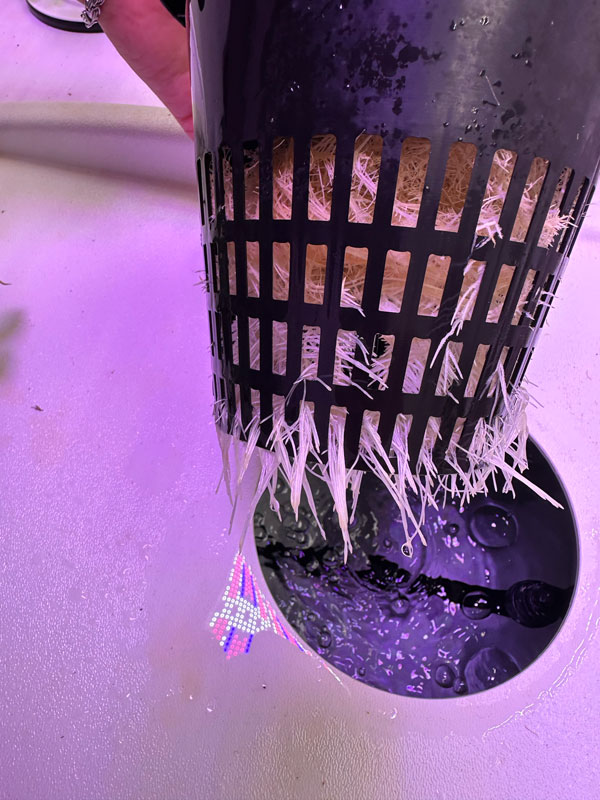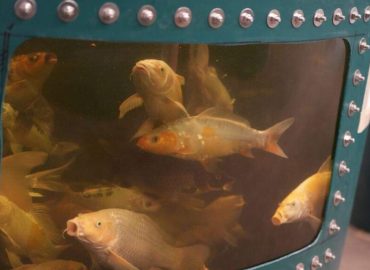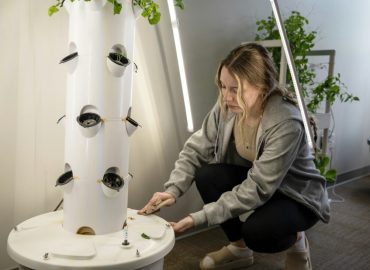DWC Hydroponics

Deep Water Culture Growing Systems for Everyone
DWC hydroponics is one of the longest-standing and most successful hydroponic growing methods practiced today. The earliest DWC (Deep Water Culture) systems helped plant researchers build much of the modern knowledge we have about plants and nutrient uptake.
For those unfamiliar with the basic DWC principle, it’s quite simple: plants are supported in a net basket or collar positioned in a lid that covers a light-tight container filled with a hydroponic nutrient solution (water + soluble fertilizers). An external air pump, similar to those used in aquariums, sends fresh air through tubing to an air stone or diffuser located at the bottom of the container.
The bare roots of the plant extend from the net basket into the aerated nutrient solution. With nothing obstructing the absorption of water, minerals, or oxygen, plants thrive—often displaying very fast growth rates.
Advantages:
- Less water is needed due to the closed-loop system
- Little to no growth medium required
- Simplified nutrient management—what’s added is available to the plant
- Fewer pests, thanks to the absence of hiding places like soil
- Rapid plant growth due to an optimized root zone
- Easier to replicate results from crop to crop
- Heating or cooling the solution can reduce environmental HVAC costs
Early DWC Growing
DWC hydroponics was originally employed by pioneering plant researchers seeking to determine which nutrients were essential for plant growth. In soil, where nutrients are abundant and variable, isolating elements can be difficult. But with DWC nutrient solutions, researchers could precisely control inputs.
They conducted experiments by omitting one element at a time from the solution to see if plants could complete a full lifecycle without it. These trials helped define the essential elements required by higher plants to grow and reproduce.
Today, DWC hydroponics remains a valuable tool for crop researchers around the world.
Modern-Day DWC Hydroponics
While the core principles remain unchanged, modern growers have more choices than ever when it comes to DWC systems. Factory-built setups often include advanced features and durable materials that improve performance and ease of use.
Gone are the days of wrapping lab beakers in foil and using cotton plugs to support plants. Today’s systems are far more refined—but DWC remains accessible for DIY enthusiasts thanks to its simple design and use of widely available materials.
Whether purchasing a complete system or building your own, follow these key principles for DWC success.
Inert Materials Only
Ensure that all system components—lid, container, and net pot—are chemically inert and non-reactive with nutrient solutions. These solutions are mildly acidic and saline, so materials like most metals should be avoided. Corrosion can release harmful substances into the solution.
Acceptable materials: HDPE, ABS, silicone, stainless steel, and sometimes styrofoam coolers or wooden containers lined with opaque polyethylene.
TIP: Buying a purpose-built DWC system offers peace of mind and durability for your investment.
Above: The Solo Comm from Current Culture H2O is a complete professional grade DWC hydroponics system
Light-Proof Design
System components should be opaque to prevent light infiltration. Algae thrive in lit environments and can compete with roots for oxygen. Some algae can even promote root diseases.
- White materials reflect light and help keep surfaces cooler
- Black materials block light effectively but can absorb heat
Accessibility
Growers must be able to reach inside the system to top up water, check pH or PPM, and inspect roots. Most commercial systems offer access ports for convenience. Easy drainage is also important, especially for weekly nutrient changes.
Robust Construction
Hydroponic growing is demanding. Your DWC system will need to handle:
- Several gallons of nutrient solution per plant
- Prolonged exposure to bright light (UV-stabilized materials are best)
- The weight of mature plants
- Constant contact with mildly acidic, saline solutions
Weak materials can lead to failure, leaks, or damage—so durability is key.
High vs. Low Plant Density DWC Systems
Growers can choose between individual systems (one plant per container) or larger, multi-plant systems. High-density setups are efficient—one task benefits many plants. But individual systems offer flexibility for growing different varieties or stages in the same space.
TIP: Swapping out lids lets you switch between single and multi-plant setups. Start with many, then thin to the best few. This approach reduces inputs like light, space, and nutrient use.
Fertilizer for DWC Hydroponics
Use only fertilizers formulated for hydroponics. Traditional garden fertilizers may include unstable ingredients like urea or ammonium nitrate, which can lead to pH fluctuations. Organic options are generally unsuitable for DWC.
Mineral-based hydroponic fertilizers deliver consistent, high-yield results.
Always follow label instructions. It’s easier to fix an underfed crop than to reverse overfertilization.
Temperature is Important in DWC Hydroponics
Maintain the nutrient solution between 65–75°F (18–24°C). This promotes dissolved oxygen levels that support healthy root systems and help prevent disease.
- Indoors: Monitor closely, especially under grow lights
- Outdoors: Natural night-time cooling often helps
- Consider aquarium heaters or chillers for larger or temperature-sensitive setups
DWC System Crop Types
A wide variety of plants thrive in DWC hydroponics, including:
- Leafy greens
- Tomatoes
- Peppers
- Cucumbers
- Melons
- Herbs
- Medicinal plants
- Flowers
Experienced gardeners new to DWC are often amazed at the speed and productivity of plants. Be prepared to prune, trellis, and initiate flowering early to avoid space issues. Some growers start seeds or cuttings directly in the system, while others prefer to transplant from plugs with established leaves.
Conclusion
DWC growing is fun, productive, and efficient. Plants get continuous access to oxygen, water, and nutrients—virtually eliminating the risks of over or under-watering. This frees up the grower’s time for other important tasks.
Additionally, DWC hydroponics is cleaner and more hygienic than soil-based gardening. It uses less water and fertilizer, and system components rarely need replacing—just clean, refill, and plant again.
Whether you’re a hobbyist or a serious grower, DWC hydroponics offers an accessible, rewarding path to growing strong, healthy crops.
Thinking you might like to grow bigger? Check out RDWC Systems
The post DWC Hydroponics appeared first on GROZINE.








